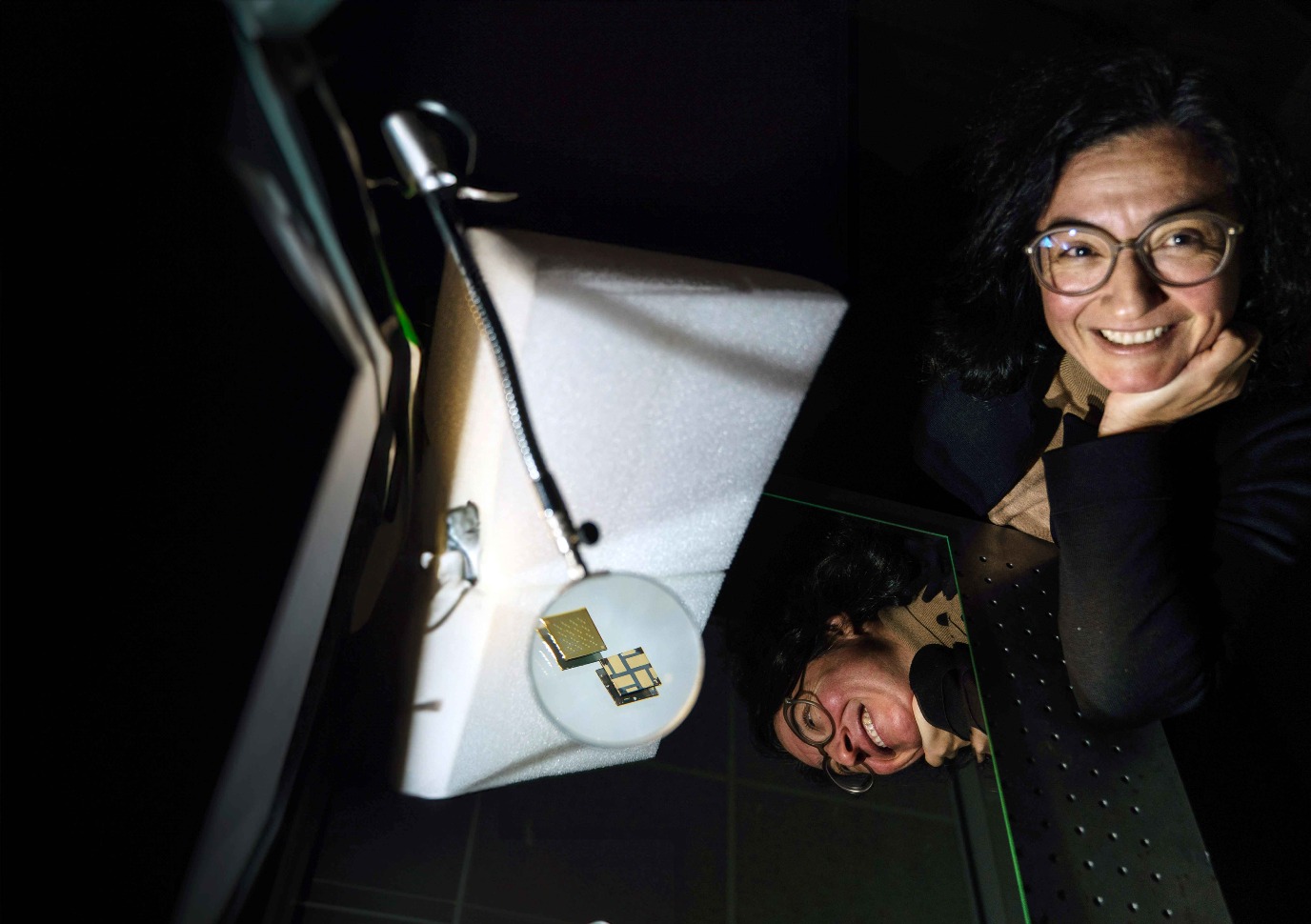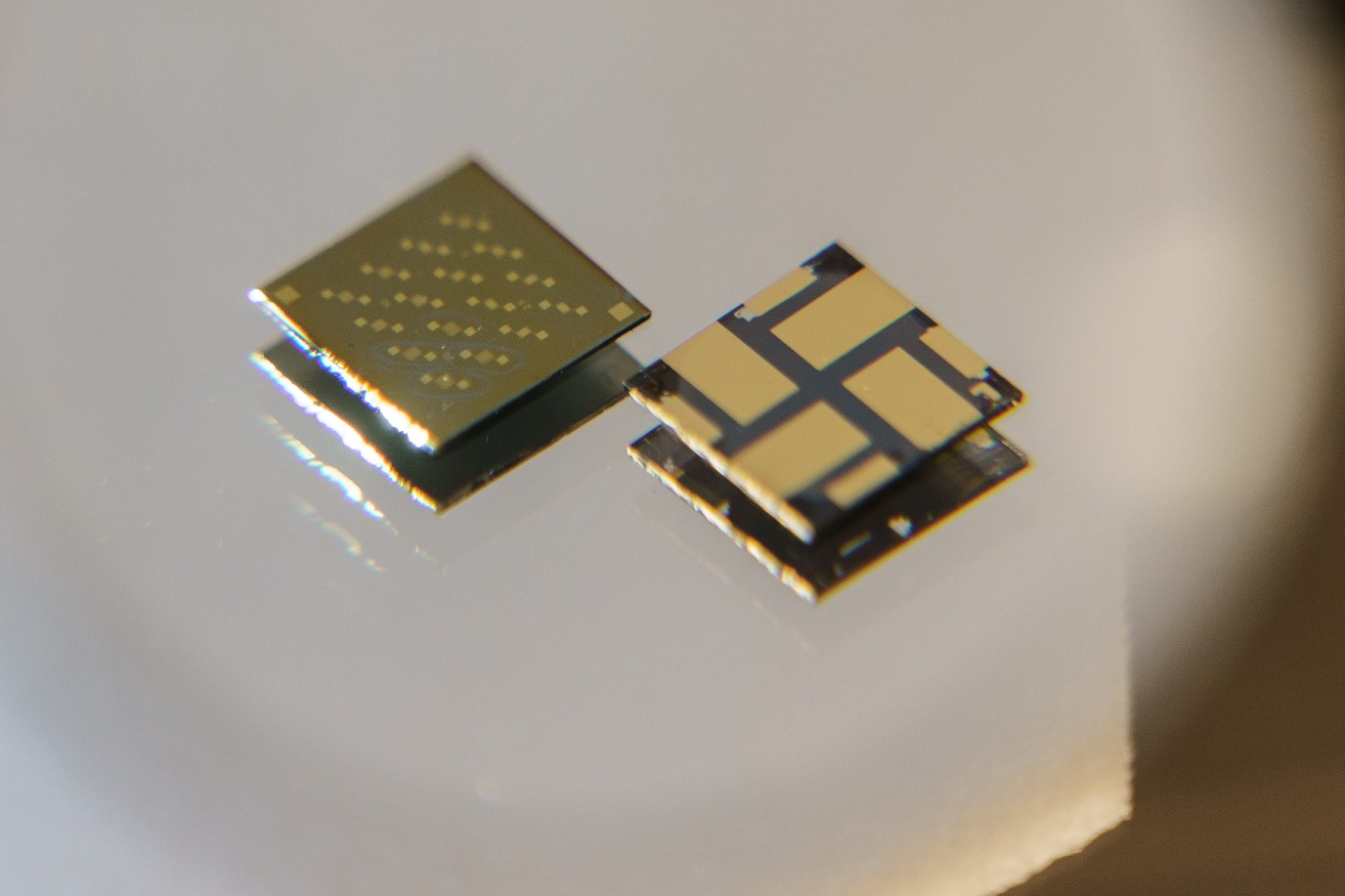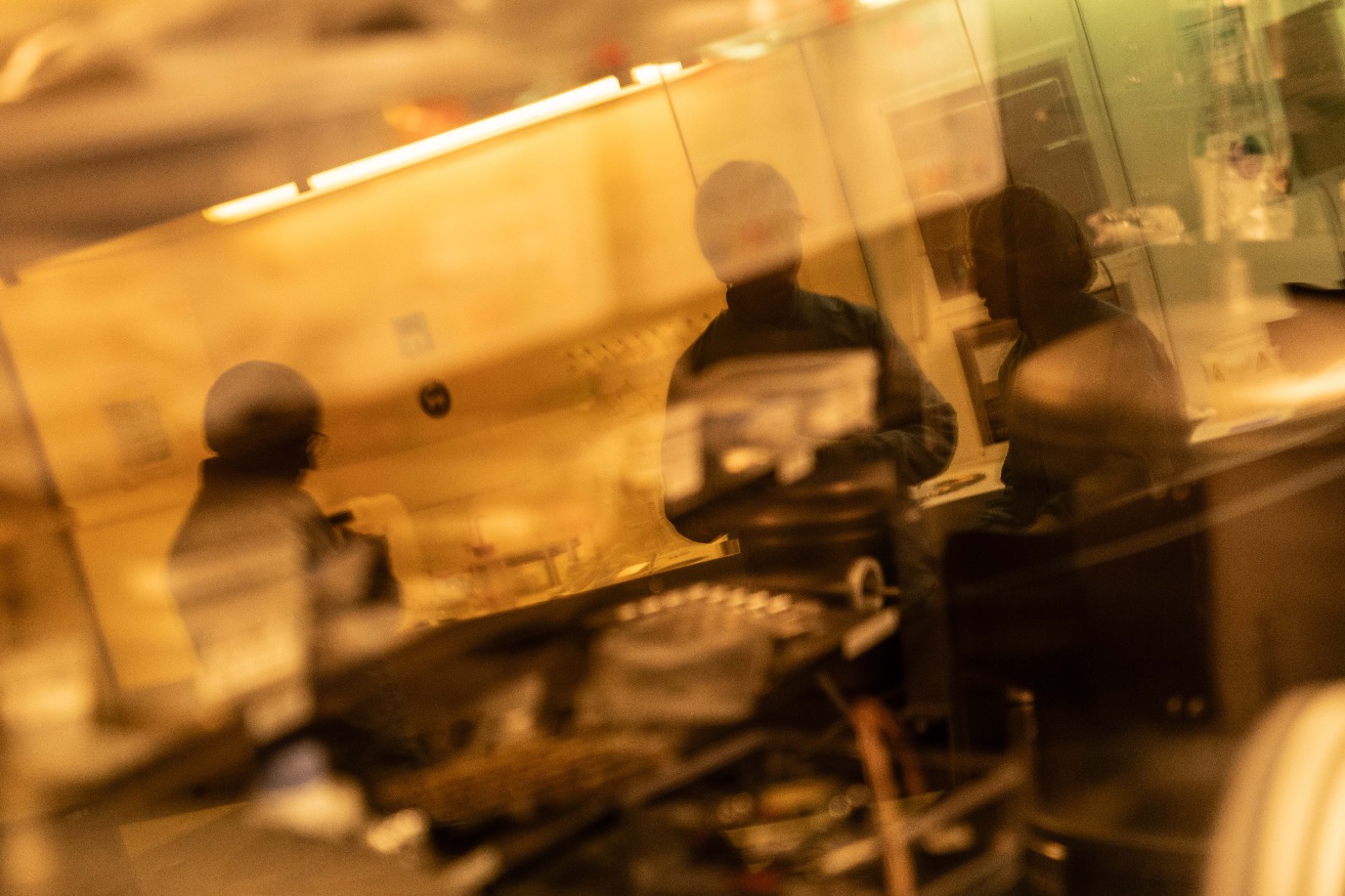Nachtzicht met kunstmatige atomen
Door het vergrootglas zien we een dun plaatje bedekt met quantum dots: halfgeleider deeltjes met speciale eigenschappen als gevolg van hun minuscule formaat. Professor Maria Loi gebruikt ze om te kunnen ‘zien’ in het donker: je kunt er namelijk een digitale infraroodcamera mee maken.




Quantum dots worden ook wel kunstmatige atomen genoemd, maar zijn in feite kleine kristalstructuren van een paar duizend atomen groot. Op die kleine schaal zijn de materialen onderhevig aan zogenaamde quantumeffecten. Door het juiste materiaal te kiezen, en heel nauwkeurig het formaat van een quantum dots te controleren, kunnen wetenschappers spelen met die effecten. Loi legt uit: ‘Door het formaat te veranderen, kun je eigenschappen krijgen die dit materiaal in de natuur niet heeft.’
In 2023 waren de quantum dots nog goed voor een Nobelprijs, maar ze hebben ook hun weg naar toepassingen in onze technologie al gevonden. Zo maken QLED-schermen gebruik van quantum dots om een specifieke kleur weer te geven. Een grote quantum dot geeft rood licht, een kleinere groen.
Loi gebruikt de quantum dots om licht te detecteren: wanneer er licht van een specifieke kleur op valt, geven de dots een elektrisch signaal af. Dit principe ligt aan de basis van een digitale camera. In het lab van Loi worden de quantum dots op een elektronisch plaatje gegoten in de vorm van een vloeibaar inkt-achtig spul.
Loi: ‘Ons belangrijkste resultaat is dat we zulke quantum-dot-inkt heel stabiel kunnen maken, ook met grote quantum dots. Vanwege hun grote formaat zijn ze gevoelig voor infrarood.’ En met die gevoeligheid voor infrarood licht, heb je de basis van een digitale camera waarmee je kunt zien in het donker.
Tekst: FSE Science Newsroom | Charlotte Vlek
Foto’s: Reyer Boxem
In Makers van de RUG belichten we elke twee weken een onderzoeker die iets concreets heeft ontwikkeld: van zelfgemaakte meetapparatuur voor wetenschappelijk onderzoek tot kleine of grote producten die ons dagelijks leven kunnen veranderen. Zo dragen RUG-onderzoekers bij aan oplossingen voor grote wetenschappelijke en maatschappelijke uitdagingen.
Techniekonderwijs en -onderzoek maken bij de RUG al decennia deel uit van een breed palet aan sterke disciplines en landelijk werken we steeds intensiever samen met de vier technische universiteiten.
Eerdere portretten van 'Makers' vind je op de overzichtspagina .
Meer informatie
Meer nieuws
-
19 december 2025
Mariano Méndez ontvangt Argentijnse RAÍCES-prijs
-
18 december 2025
Waarom innoveren, en voor wie?
-
17 december 2025
Ben Feringa wint Feynmanprijs
